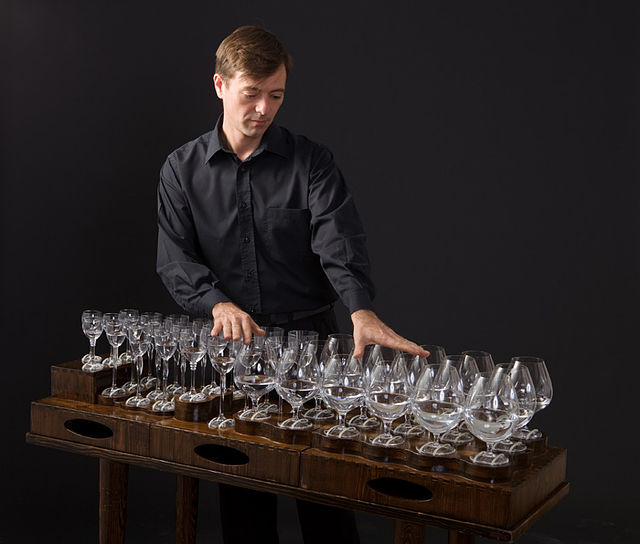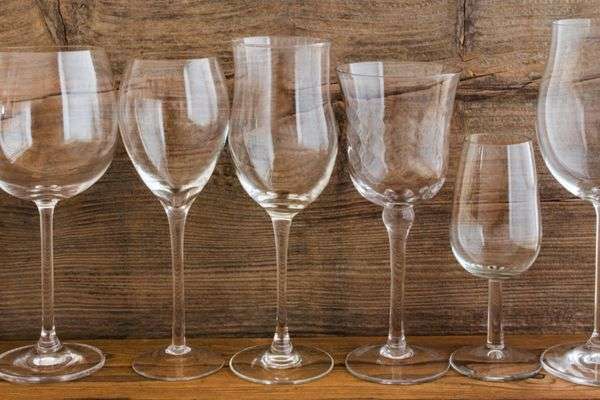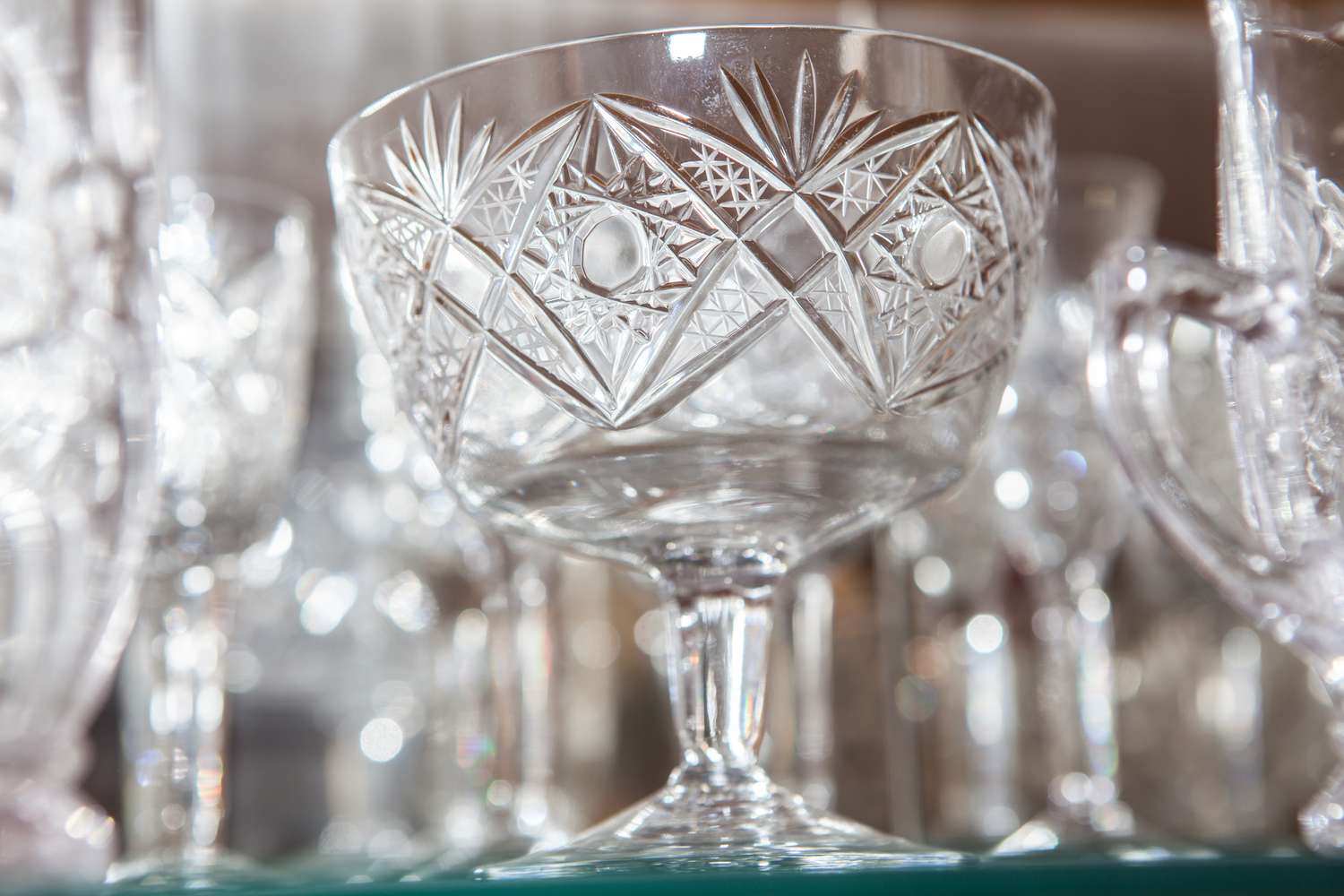Crystal glasses
Melodic Percussions
Middle East
Ancient
Video
The crystal glasses, often referred to as the glass harp or musical glasses, are a unique and enchanting musical instrument that has captured the imagination of musicians and audiences alike. Known for their delicate, ethereal tones, crystal glasses have been used in various musical traditions around the world.
Crystal glasses are classified as friction idiophones, meaning they produce sound through the vibration of the material itself when friction is applied. Typically made from glass or crystal, these instruments consist of a series of upright glasses arranged in order of pitch. Each glass is tuned to a specific note by either grinding it to the desired pitch or adjusting its water level. When a musician rubs a moistened finger around the rim of the glass, it creates vibrations that produce sound. The tonal quality of crystal glasses is often described as soft and angelic, making them ideal for creating melodic lines and harmonies. The range of pitches can vary depending on the number and size of glasses used; a standard set may span two to three octaves. The sound produced can be both soothing and haunting, evoking emotions that resonate deeply with listeners. One notable feature of crystal glasses is their visual appeal. The shimmering surfaces of the glasses reflect light beautifully, adding an aesthetic dimension to performances. Musicians often use crystal glasses in combination with other instruments to create rich soundscapes that blend harmoniously.
History and Origin
The history of crystal glasses dates back centuries, with roots in ancient musical traditions. The earliest known references to glass instruments can be traced to the Roman Empire, where glass vessels were used to produce sound. However, it was not until the 18th century that the glass harp began to take shape as a distinct musical instrument. The glass harmonica, invented by Benjamin Franklin in 1761, is one of the most famous early forms of glass instruments. Franklin’s design featured a series of glass bowls mounted horizontally on a spindle that could be turned by a foot pedal. Musicians would touch the rims of these spinning bowls with moistened fingers to produce sound. This innovation allowed for greater control over pitch and dynamics compared to earlier versions. As interest in glass instruments grew throughout Europe, various musicians began experimenting with different designs and techniques.
By the 19th century, crystal glasses were commonly used in orchestras and solo performances. They became particularly popular in classical music compositions due to their unique tonal qualities.In contemporary music, crystal glasses have experienced a resurgence in popularity. Modern composers have embraced their ethereal sounds and incorporated them into various genres such as ambient music, film scores, and experimental compositions.
Working Mechanism
The working mechanism of crystal glasses relies on friction to produce sound. When a musician rubs a moistened finger around the rim of a glass, it creates vibrations that resonate through the material. The friction generates sound waves that travel through the air and reach the listener’s ears. To achieve different pitches, each glass must be carefully tuned. This can be done by adjusting the thickness or size of the glass or by adding water to change its mass. Filling a glass with water lowers its pitch; conversely, emptying it raises the pitch. This dynamic allows musicians to create melodies by selecting different glasses based on their desired notes. The technique used to play crystal glasses can vary widely among musicians. Some may prefer gentle strokes for a softer sound while others may use more forceful motions for louder tones. Additionally, players can create harmonies by combining multiple glasses or using techniques such as glissando—sliding between notes for fluid transitions.
Types of Crystal Glasses
Crystal glasses can be categorized into several types based on their design and usage:
Glass Harp: A traditional setup consisting of several upright wine glasses arranged in order of pitch; played by rubbing fingers along their rims.
Glass Organ: A more complex version that incorporates multiple rows or tiers of tuned glasses; often used in orchestral settings.
Solo Glass Instruments: Smaller sets designed for individual performers; these may include fewer glasses but allow for intricate melodies.
Modern Variations: Contemporary adaptations may include electronic enhancements or alternative materials while maintaining traditional playing techniques.
Each type serves specific roles within musical contexts while contributing uniquely to overall sound.
Uses of Crystal Glasses
Crystal glasses have diverse applications across various musical genres:
Classical Music: Often featured in orchestral compositions where their unique tonal qualities add depth.
Folk Music: Used in traditional folk settings to create melodic lines that complement storytelling.
Ambient Music: Employed by modern composers seeking ethereal sounds for atmospheric effects.
Film Scores: Frequently utilized in cinematic compositions to evoke emotions through delicate melodies.
Educational Settings: Crystal glasses are also used in music education to teach concepts related to pitch and harmony.
Cultural Significance
The cultural significance of crystal glasses extends beyond their musical capabilities; they embody artistic expression and creativity across various traditions. In many cultures, music serves as a means of storytelling and connection among communities. The enchanting sounds produced by crystal glasses evoke feelings of nostalgia and wonder while enhancing cultural rituals and celebrations. In addition to their historical roots in classical music, crystal glasses have found their place within contemporary artistic expressions.
They are often featured in multimedia performances where visual art merges with soundscapes—creating immersive experiences for audiences. Furthermore, as global interest grows in world music traditions—crystal glasses serve as powerful tools for bridging cultural gaps through shared experiences among diverse audiences.
FAQ
What is the Crystal glasses made of?
Crystal glasses are made from high-quality glass, often containing lead oxide or other materials like potassium oxide to enhance clarity and resonance. The precise composition creates a durable and transparent material that produces a pure, ringing tone when rubbed or tapped. These characteristics make crystal glasses ideal for use as musical instruments in creating melodic sounds.
What is the Crystal glasses used for?
Crystal glasses are used as musical instruments to create melodic tones by rubbing the rims with wet fingers or tapping them gently. This technique produces a resonant, ethereal sound, often used in performances, soundscapes, or experimental music. They are also popular in creating unique, atmospheric effects in classical and contemporary compositions.
How to make an Crystal glass?
To make a crystal glass, start by melting a mixture of silica sand, lead oxide, and other minerals at high temperatures to create molten glass. The molten glass is shaped using blowing, molding, or hand-cutting techniques. Once shaped, the glass is slowly cooled in an annealing oven to prevent cracking. Finally, skilled artisans may cut and polish the surface to enhance its clarity and brilliance.
 Links
Links
References
Other Instrument
Categories




















